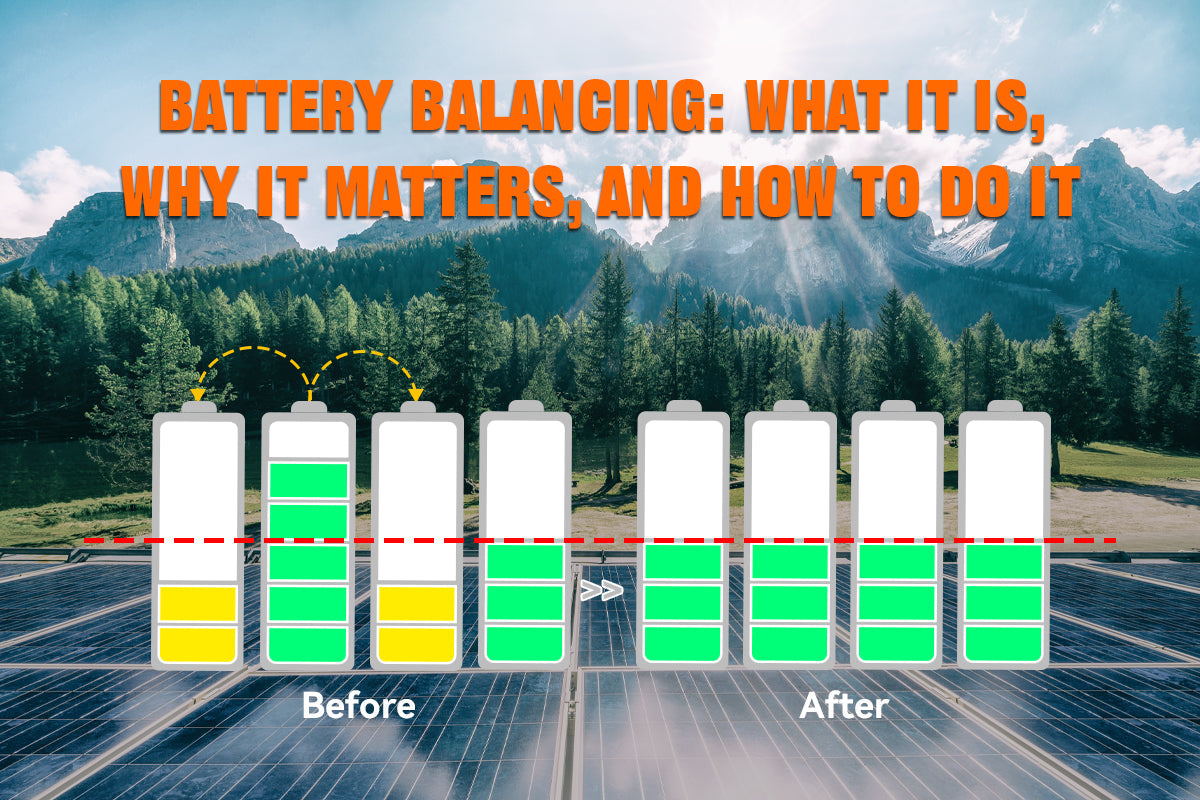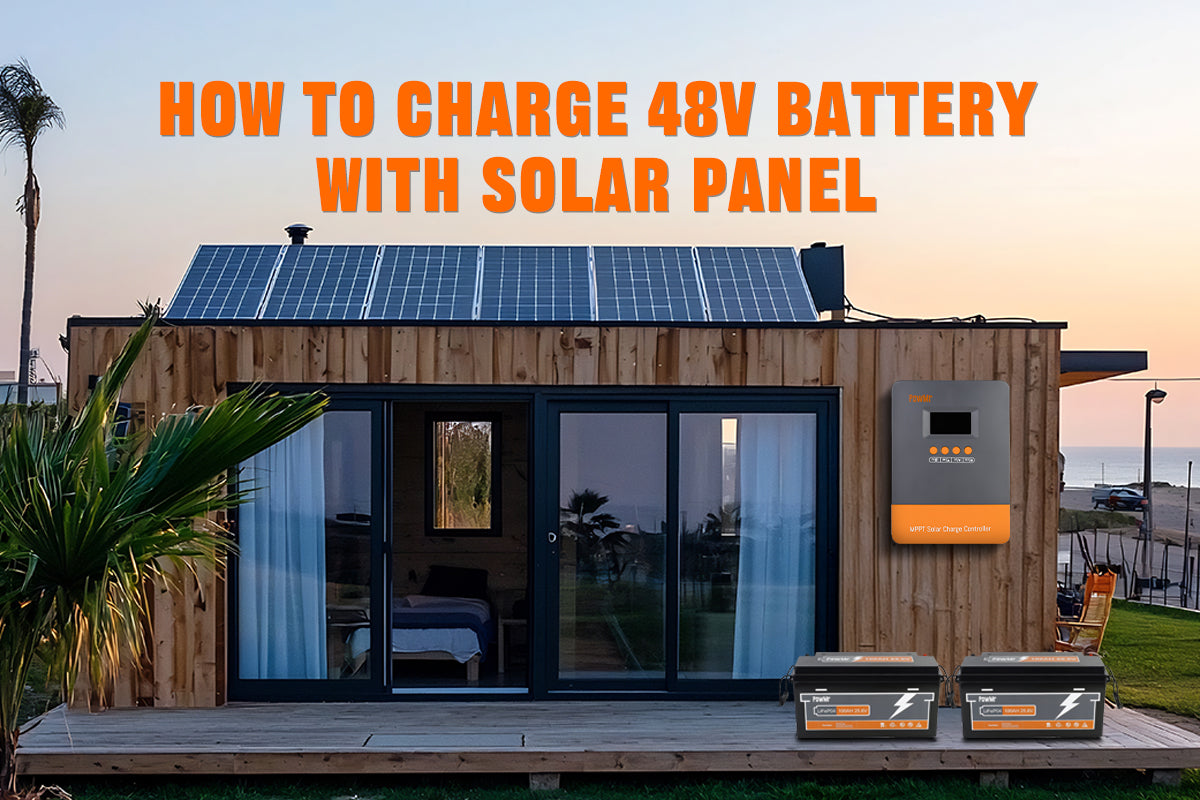แบตเตอรี่ลิเธียมเป็นที่รู้จักในด้านประสิทธิภาพ อายุการใช้งานที่ยาวนาน และความเชื่อถือได้ ทำให้เป็นตัวเลือกที่นิยมสำหรับการใช้งานที่หลากหลาย แต่แบตเตอรี่ลิเธียมมีอายุการใช้งานจริง ๆ นานแค่ไหน? ไม่ว่าคุณจะใช้มันในรถยนต์ไฟฟ้า (EVs) ระบบพลังงานแสงอาทิตย์ หรืออุปกรณ์พกพา การเข้าใจอายุการใช้งานของแบตเตอรี่ลิเธียมจึงเป็นสิ่งสำคัญในการทำให้คุณได้รับประโยชน์สูงสุดจากการลงทุนของคุณ.
บทความนี้สำรวจว่าแบตเตอรี่ลิเธียมมีอายุการใช้งานนานแค่ไหน ปัจจัยที่มีผลต่อความทนทานของพวกมัน และเคล็ดลับในการเพิ่มอายุการใช้งานของพวกมัน
อายุการใช้งานของแบตเตอรี่ลิเธียมคืออะไร
ความจุของแบตเตอรี่ เสื่อมสภาพ เมื่อเวลาผ่านไปจากการใช้งานเนื่องจาก ปฏิกิริยาเคมีภายใน รวมถึงการสลายตัวของอิเล็กโทรไลต์และการเจริญเติบโตของชั้น SEI ซึ่งส่งผลกระทบเชิงลบต่อประสิทธิภาพของแบตเตอรี่.
วงจรชีวิตของแบตเตอรี่หมายถึงจำนวนรอบการชาร์จ-การปล่อยประจุที่แบตเตอรี่สามารถทำได้ ก่อน ที่ความจุของมันจะลดลงไปยังเปอร์เซ็นต์ที่กำหนด (โดยทั่วไปคือ 80%) โดยปกติจะมีการประเมิน ภายใต้สภาวะมาตรฐาน (เช่น อุณหภูมิ, อัตราการปล่อยประจุ) เพื่อกำหนดอายุการใช้งานที่คาดหวัง ตามที่ระบุไว้บนฉลากผลิตภัณฑ์.
แบตเตอรี่ลิเธียม ขึ้นอยู่กับเคมีของมัน แสดงวงจรชีวิตที่แตกต่างกัน โดยทั่วไปแล้ว แบตเตอรี่ Lithium-Ion จะมีอายุการใช้งานประมาณ 500-1000 รอบ แบตเตอรี่ LiFePO4 (Lithium Iron Phosphate) สามารถมีอายุการใช้งานถึง 2000-6000 รอบ ในขณะที่แบตเตอรี่ LiPo (Lithium Polymer) มีอายุการใช้งานที่อยู่ระหว่างช่วงเหล่านี้ ขึ้นอยู่กับคุณสมบัติและการใช้งานเฉพาะของมัน.
แบตเตอรี่ชนิดไหนที่มีอายุการใช้งานยาวนานที่สุด?
แบตเตอรี่ลิเธียมเหล็กฟอสเฟต (LiFePO4) มีอายุการใช้งานที่ยาวนานที่สุด โดยสามารถใช้งานได้ถึง 6,000 รอบ แบตเตอรี่เหล่านี้มีความทนทานสูง เหมาะสำหรับรถยนต์ไฟฟ้า ระบบพลังงานแสงอาทิตย์ และการเก็บพลังงาน.
อายุการใช้งานของแบตเตอรี่ลิเธียมคืออะไร?
อายุการใช้งานของแบตเตอรี่หมายถึงระยะเวลาที่แบตเตอรี่จะใช้งานได้ก่อนที่จะไม่สามารถใช้งานได้อีกหรือจำเป็นต้องเปลี่ยนใหม่ เนื่องจากอายุการใช้งานของแบตเตอรี่ลิเธียมมีความแตกต่างกันตามอัตราการชาร์จ-คายประจุ อุณหภูมิในการทำงาน ความลึกของการคายประจุ (DoD) และรูปแบบการใช้งานโดยรวม ทำให้อายุการใช้งานของแบตเตอรี่กลายเป็น ผลลัพธ์ที่เป็นจริงของ อายุการใช้งานของรอบการใช้งานรวมกับปัจจัยอื่น ๆ เช่น ความเข้มข้นในการใช้งาน การบำรุงรักษา และสภาพแวดล้อม.
แบตเตอรี่ลิเธียมมีอายุการใช้งานเฉลี่ยนานแค่ไหน?
นี่คือภาพรวมของการใช้งานแบตเตอรี่ลิเธียมที่พบบ่อยและอายุการใช้งานเฉลี่ยของพวกมัน:
แบตเตอรี่ลิเธียมไอออน (Li-ion) ซึ่งมักใช้ในอุปกรณ์พกพา เช่น สมาร์ทโฟนและแล็ปท็อป มักมีอายุการใช้งานระหว่าง 2 ถึง 5 ปี อายุการใช้งานของพวกมันได้รับอิทธิพลจากปัจจัยต่างๆ เช่น รอบการชาร์จ-ปล่อยประจุ อุณหภูมิ และความลึกที่ถูกปล่อยประจุ.
แบตเตอรี่ลิเธียมไอรอนฟอสเฟต (LiFePO4) ซึ่งมักใช้ในรถยนต์ไฟฟ้า (EVs), รถบ้าน (RVs), รถกอล์ฟ และระบบพลังงานแสงอาทิตย์ มีอายุการใช้งานที่ยาวนานตั้งแต่ 5 ถึง 15 ปี พวกเขามีชื่อเสียงในด้านความทนทานต่ออุณหภูมิที่รุนแรงและความสามารถในการจัดการการปล่อยพลังงานที่ลึกโดยไม่เกิดการเสื่อมสภาพอย่างมีนัยสำคัญ.
แบตเตอรี่ลิเธียมโพลิเมอร์ (LiPo) ที่ใช้ในโดรนและอุปกรณ์ควบคุมระยะไกล มักมีอายุการใช้งานระหว่าง 2 ถึง 5 ปี โดยมีอายุการใช้งานรอบอยู่ระหว่าง 300 ถึง 500 รอบ.
แบตเตอรี่ลิเธียมมีอายุการใช้งานนานกว่าแบตเตอรี่ทั่วไปหรือไม่?
ใช่ แบตเตอรี่ลิเธียมมักมีอายุการใช้งานระหว่าง 5 ถึง 15 ปี ขึ้นอยู่กับการใช้งานและวิธีการใช้งาน ซึ่งนานกว่าประเภทแบตเตอรี่เก่า ๆ เช่น แบตเตอรี่ตะกั่ว-กรด ที่มักมีอายุการใช้งานเพียง 3 ถึง 5 ปี เท่านั้น.
วิธีการขยายอายุการใช้งานของแบตเตอรี่ลิเธียม - เคล็ดลับสำคัญเกี่ยวกับปัจจัยที่มีผล
เคล็ดลับ 1. หลีกเลี่ยงการชาร์จเกินหรือการปล่อยไฟเกิน
การชาร์จหรือการปล่อยประจุแบตเตอรี่ลิเธียมเกินขีดจำกัดที่แนะนำอาจทำให้เกิดความเสียหายที่ไม่สามารถกลับคืนได้ ซึ่งจะลดความจุและอายุการใช้งานโดยรวมของแบตเตอรี่ การชาร์จถึง 100% หรือการปล่อยแบตเตอรี่จนหมด 0% จะทำให้เคมีภายในของแบตเตอรี่เครียด.
ใช้ที่ชาร์จที่มีการป้องกันในตัวและควรอ้างอิงถึงสเปคของผู้ผลิตเสมอเพื่อ กำหนดพารามิเตอร์การชาร์จและการปล่อย การตั้งค่าที่สำคัญ เช่น การตัดไฟฟ้าต่ำและสูง, แรงดันไฟฟ้าดูดซับ, และแรงดันไฟฟ้าหมายถึงควรปรับ ตามระดับแรงดันไฟฟ้าของแบตเตอรี่.
บทความที่เกี่ยวข้อง:
เคล็ดลับ 2. ขยายขนาดแบตเตอรี่ให้เหมาะสม
การเลือกแบตเตอรี่ที่มีความจุไม่เพียงพอต่อความต้องการของคุณอาจทำให้เกิดการปล่อยประจุลึก ซึ่งจะทำให้แบตเตอรี่เสื่อมสภาพมากขึ้นและลดอายุการใช้งานลง.
เมื่อ เลือกแบตเตอรี่ ให้พิจารณาความต้องการการใช้พลังงานของคุณและเลือก แบตเตอรี่ที่มีความจุสูงกว่า แม้ว่าจะใช้พลังงานเท่าเดิม แบตเตอรี่ที่มีขนาดใหญ่กว่าจะมีความลึกของการปล่อยประจุ (DoD) ที่ตื้นกว่า ซึ่งช่วยลดความเครียดบนแบตเตอรี่ ส่งผลให้การปล่อยประจุน้อยลงและน้อยครั้งลง ซึ่งช่วยยืดอายุการใช้งานโดยรวมของแบตเตอรี่.
เคล็ดลับที่ 3. ทดสอบและ ปรับสมดุลแบตเตอรี่ เป็นประจำ
เมื่อเวลาผ่านไป ทั้ง แบตเตอรี่แต่ละก้อนในกลุ่มและเซลล์ภายในแบตเตอรี่ลิเธียมอาจเกิดความไม่สมดุล ซึ่งจะลดประสิทธิภาพและทำให้อายุการใช้งานของแบตเตอรี่โดยรวมสั้นลง ความไม่สมดุลนี้อาจทำให้เซลล์หรือแบตเตอรี่บางก้อนชาร์จเกินหรือชาร์จไม่พอ ซึ่งอาจนำไปสู่ความเสียหายได้.
ตรวจสอบแรงดันไฟฟ้าของแบตเตอรี่หรือเซลล์แต่ละตัวเป็นระยะ ๆ และปรับสมดุลโดยใช้ BMS, อีควอไลเซอร์ หรือทำด้วยตนเอง สิ่งนี้จะช่วยให้การทำงานเป็นไปอย่างสม่ำเสมอและป้องกันการชาร์จไฟเกินหรือการปล่อยไฟลึกของเซลล์แต่ละตัว ซึ่งอาจทำให้อายุการใช้งานโดยรวมสั้นลง การปรับสมดุลเป็นประจำช่วยส่งเสริมการส่งพลังงานที่สม่ำเสมอและช่วยยืดอายุการใช้งานของแบตเตอรี่ได้อย่างมีนัยสำคัญ.
เคล็ดลับ 4. ใช้ BMS ที่มีคุณภาพสูง
หากไม่มี BMS แบตเตอรี่ลิเธียมอาจไม่ได้รับการป้องกันจากการชาร์จเกิน การปล่อยประจุลึก หรือความเสียหายจากความร้อน ซึ่งอาจทำให้อายุการใช้งานของมันสั้นลงอย่างมาก.
BMS ที่เชื่อถือได้ช่วยปกป้องแบตเตอรี่จากสภาวะการชาร์จและการปล่อยประจุที่ไม่ปลอดภัย, รับประกันการควบคุมแรงดันไฟฟ้าที่เหมาะสม, และเพิ่มประสิทธิภาพโดยรวมให้ดีที่สุด ตรวจสอบให้แน่ใจว่าระบบแบตเตอรี่ของคุณมี BMS ที่ เข้ากันได้ กับสเปคของแบตเตอรี่ของคุณ.
บทความที่เกี่ยวข้อง:
เคล็ดลับ 5. จำกัดจำนวนแบตเตอรี่
แบตเตอรี่ธนาคารขนาดใหญ่ที่มีแบตเตอรี่มากเกินไปจะสร้างการเชื่อมต่อที่มากขึ้น ซึ่งนำไปสู่ความต้านทานที่เพิ่มขึ้น ทำให้การชาร์จไม่สม่ำเสมอและสูญเสียความจุ.
จำกัด จำนวนแบตเตอรี่ในระบบ เลือกแบตเตอรี่ที่ตรงกับสเปคแรงดันไฟฟ้าและกระแสของอินเวอร์เตอร์และตัวควบคุมของคุณเพื่อหลีกเลี่ยงการเชื่อมต่อแบบขนานหรืออนุกรมที่ไม่จำเป็น.
เคล็ดลับที่ 6. เก็บแบตเตอรี่ให้อยู่ในช่วงอุณหภูมิที่เหมาะสม
อุณหภูมิที่รุนแรง ทั้งร้อนและเย็น สามารถทำให้อายุการใช้งานของแบตเตอรี่ลิเธียมสั้นลง อุณหภูมิสูงเร่งปฏิกิริยาเคมี ในขณะที่อุณหภูมิต่ำสามารถลดความสามารถของแบตเตอรี่ในการทำงานได้อย่างถูกต้อง.
เก็บและใช้แบตเตอรี่ภายในช่วงอุณหภูมิที่ระบุในเอกสารของพวกเขา หลีกเลี่ยงแสงแดดโดยตรงและการอยู่ใกล้แหล่งความร้อน ในสภาพแวดล้อมที่หนาวเย็น ให้ใช้ฉนวนหรือกรงที่มีความร้อนเพื่อป้องกันการแช่แข็ง.
บทสรุป
การเข้าใจว่าลิเธียมแบตเตอรี่มีอายุการใช้งานนานแค่ไหนและการใช้กลยุทธ์การบำรุงรักษาที่เหมาะสมสามารถขยายอายุการใช้งานของมันได้อย่างมีนัยสำคัญ โดยการรักษาอุณหภูมิให้เหมาะสม หลีกเลี่ยงการชาร์จเกินและการปล่อยพลังงานจนหมด ใช้ระบบจัดการแบตเตอรี่ที่มีคุณภาพสูง และเลือกขนาดที่เหมาะสมกับความต้องการของคุณ คุณสามารถเพิ่มประสิทธิภาพและใช้ประโยชน์สูงสุดจากการลงทุนของคุณ การปฏิบัติตามเคล็ดลับจากผู้เชี่ยวชาญเหล่านี้จะช่วยให้แน่ใจว่าแบตเตอรี่ลิเธียมของคุณจะให้บริการคุณได้ดีในหลายปีข้างหน้า.



